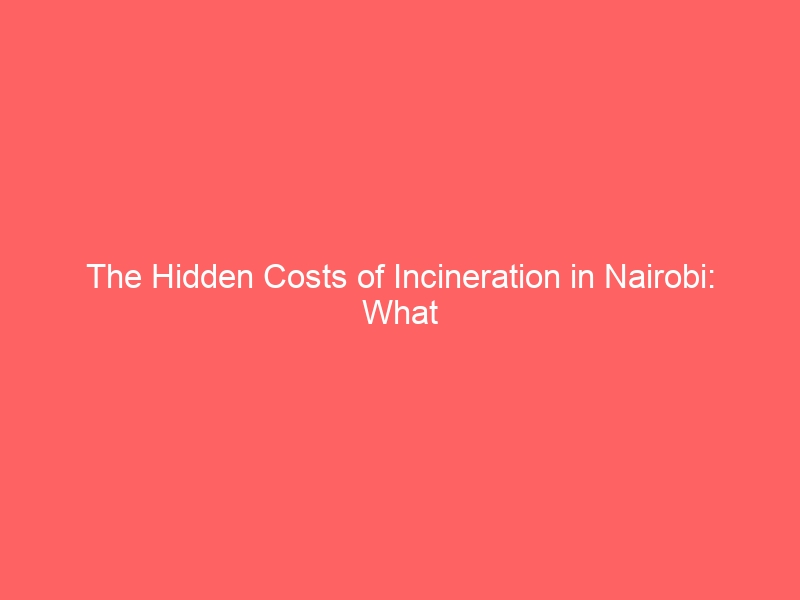Incineration is a widely used method for managing waste in urban areas, including Nairobi, Kenya. However, while it may seem like a simple and effective solution to the city’s waste management problems, there are hidden costs and potential negative impacts associated with incineration that are often overlooked.
First and foremost, incineration produces hazardous air pollutants and toxic ash, which can pose serious health risks to both the environment and human populations. The burning of waste releases harmful gases such as dioxins, heavy metals, and particulate matter, which can cause respiratory problems, cardiovascular diseases, and even cancer. Additionally, the toxic ash generated from incineration contains concentrated levels of heavy metals and other harmful substances, which can contaminate soil and water sources if not properly managed.
Furthermore, the process of incineration requires large amounts of energy to operate the facilities and to maintain high temperatures needed for complete combustion. This can lead to increased carbon emissions and exacerbate climate change, as well as contribute to the depletion of natural resources.
In addition to the environmental and health risks, there are also financial costs associated with incineration. Building and maintaining incineration facilities require significant capital investment, and the ongoing operation and maintenance expenses can be substantial. Moreover, the need for constant monitoring and control of emissions, as well as the proper disposal of toxic ash, adds to the overall cost of incinerating waste.
It is also worth noting that incineration may not always be the most cost-effective waste management option. There are alternative methods, such as recycling, composting, and waste-to-energy technologies, that are more sustainable and can result in lower long-term costs.
In light of these hidden costs and potential negative impacts, it is crucial for Nairobi to carefully consider the full scope of implications before relying solely on incineration as a waste management solution. Instead, the city should explore and invest in more sustainable and environmentally friendly approaches to waste management that can mitigate these hidden costs and promote a healthier and cleaner environment for its residents.
One such approach is to prioritize waste reduction, reuse, and recycling, which can significantly decrease the amount of waste that needs to be incinerated or landfilled. In addition, investing in waste-to-energy technologies that are more efficient and produce fewer harmful emissions can also be a viable alternative to traditional incineration methods.
Overall, it is important for policymakers, stakeholders, and citizens to be aware of the hidden costs and potential negative impacts of incineration in Nairobi. By taking a holistic approach to waste management and considering alternative solutions, the city can work towards a more sustainable and environmentally sound waste management system that benefits both the present and future generations.






